
Subscribe & Follow
Jobs
- Agency Sales Account Executive Johannesburg
- Static Production Coordinator Cape Town
The power of 1st party data in omnichannel strategy and measurement

Planning with 1st party data
Combining POI and store data with OOH placements and traffic patterns gives us a basic idea of where we should be looking to buy, but it's when we overlay intent data from our proprietary microapp NearMe that things get interesting. This layer highlights where people have been searching for a specific product and provides us with intent zones.
A second intent layer comes via our direct integrations with the country’s biggest mobile publishers (Arena, eNCA, News24 and so on). We process 500 million location data points every month, which show us where and when people are in stores (as well as at other POIs) – a powerful in market or affinity signal.
We have the same location technology tagged onto the websites of our clients allowing for geospatial analysis. This helps determine where a client's audience is for planning, and indicates if the client's site saw a lift in traffic post campaign, specifically in the areas around the selected sites – a real game changer in OOH measurement.

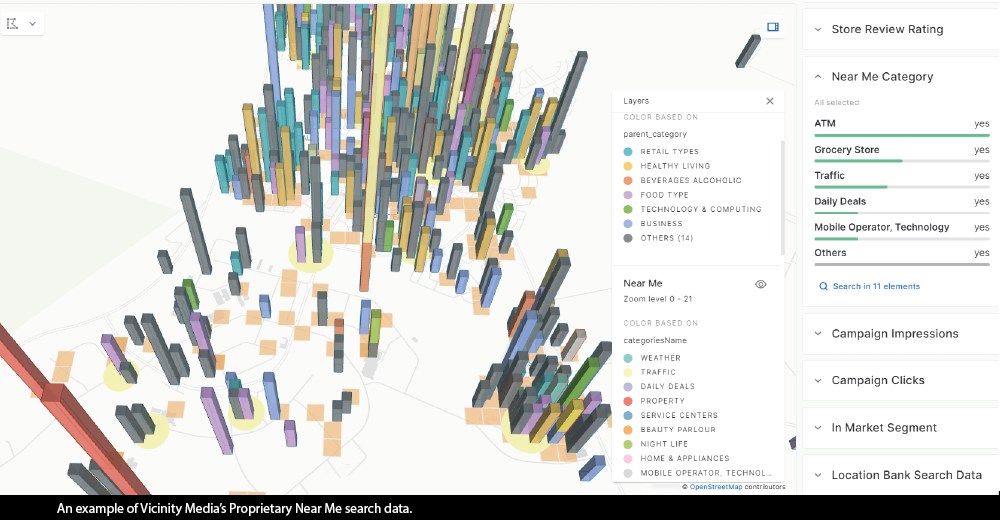
We further utilise footfall data to provide brand overlap insight which opens up a new view on consumer behaviour during the strategy phase. For example, the data may show that for a fast-food restaurant, their audience overlaps with certain competitors, fashion retailers, liquor stores, and cell phone stores. This allows you to understand your consumers, and build out a targeting strategy that uses, for example, geo-conquesting (target messaging around competitor stores) or focusing around certain overlapping POIs that your audience visits.
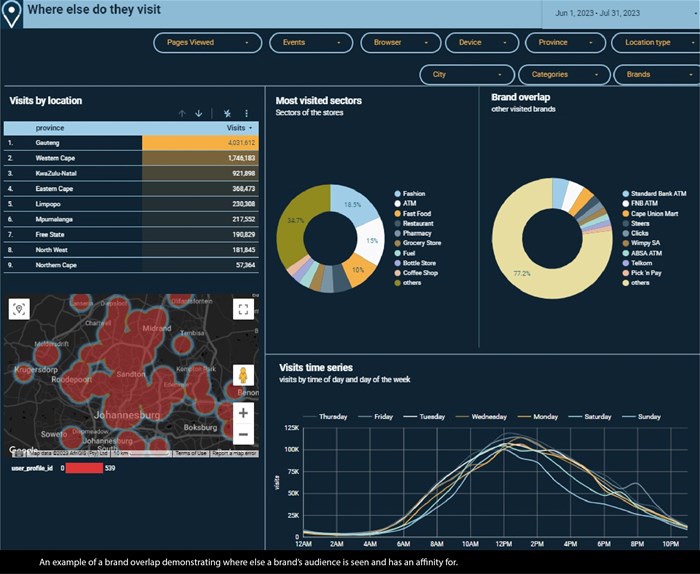
Below is an example of employing both proximity analysis to identify nearby DOOH panels and overlaying NearMe search data for a pharmacy retailer, based on the retailers following brief:
- Ensure consumers can convert based on convenience – therefore proximity from DOOH site to store is very important.
- Combat the competitors far greater store footprint by seeking out areas where competitor and our brand has a footprint and can disrupt the competitors strength in numbers with a great deal/offer.
- Use data to select areas and sites where users have a high degree of interest for pharmacy – identify areas where the brand can grow awareness based on high intent.
Execution steps:
- Visualise the distance of DOOH sites from stores and ensure shortlisted sites have a base proximity of 2,5km to cater for convenience.
- Secondly, overlay Vicinity NearMe search data of users searching for ‘pharmacy near me’ – pink bubbles indicate search behaviour – the larger the bubble, the higher the activity.
- Select the best placed sites that capture these users' attention and display dynamic location in the creative to build awareness of store proximity.
- Finally, identify white spaces where no DOOH can be procured and upweight mobile display ads in these areas to ensure we reach the harder to reach audiences in an omnichannel fashion.

1st party data in execution
Data isn't just for planning and measurement – data can greatly enhance the actual execution of your campaign.
Dynamic distance allows you to inform your consumer with the distance to store, store name, drive time, or address.
Geo conquesting as mentioned uses location data to identify a brand's competitors in an effort to promote a competing or competitive offering to their customers. This example uses both as we selected a site close to where the competitor’s store is… and published how close the audience actually was to the client’s store.
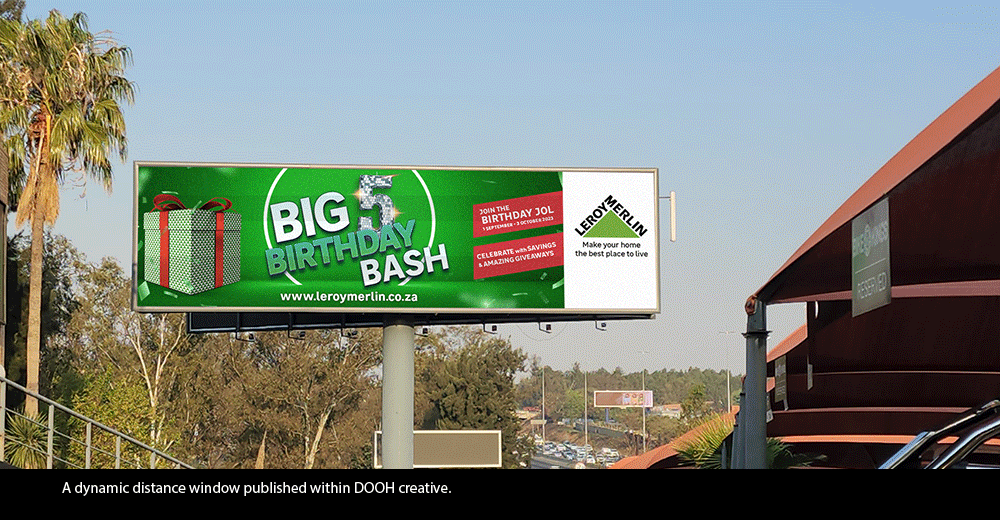
Other examples of using 1st party data in execution include:
- AdTrust – turning positive consumer reviews into content that converts by displaying the specific store’s positive reviews.
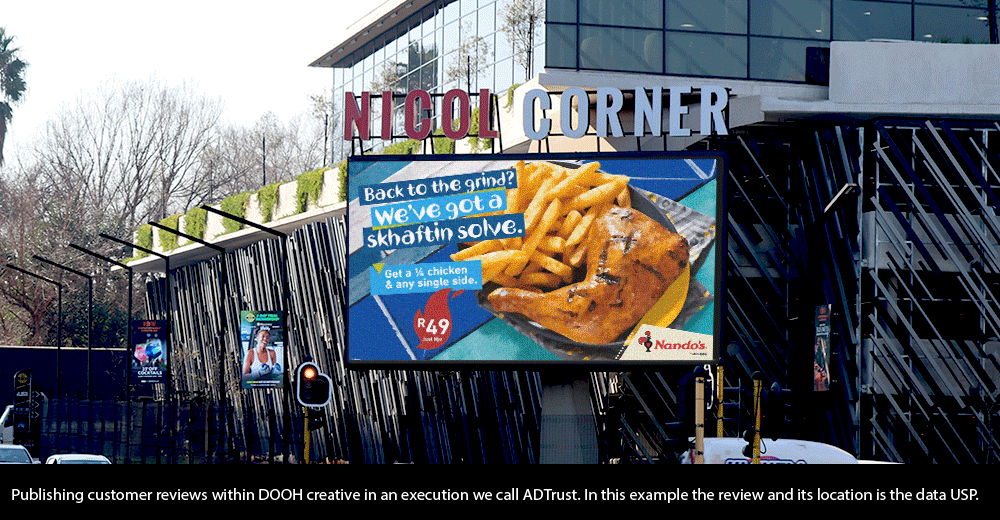
- DealFeed pushes product, price, and promotions dynamically to any screen from a clients website or shopper feed.
- Any custom message per store such as a manager’s special offer specific to that store.
- QR codes allow us to bring audiences back into the digital space to measure conversions and other metrics and enhance the engagement further.
1st party data in measurement
Our audience data is what makes Vicinity Media stand out in the market. We pride ourselves on the quality of our audience data (with a very healthy dose of quantity).
We are bringing true measurement to DOOH through a four-pronged measurement suite:
- Store visit uplifts
- Location based search uplifts
- Mobile campaign uplifts
- Web traffic uplifts – not just any lifts but geospatial lifts to prove where the activity works.
For a leading premium beer brand, we ran a campaign to push event ticket sales on a ticketing website. The website runs our location technology, allowing us to track the user journey both digitally and geospatially on this booking site. This means we could provide the client with both conversion data as well as geospatial data on where the interactions happened, thus measuring the efficacy of respective DOOH placements.
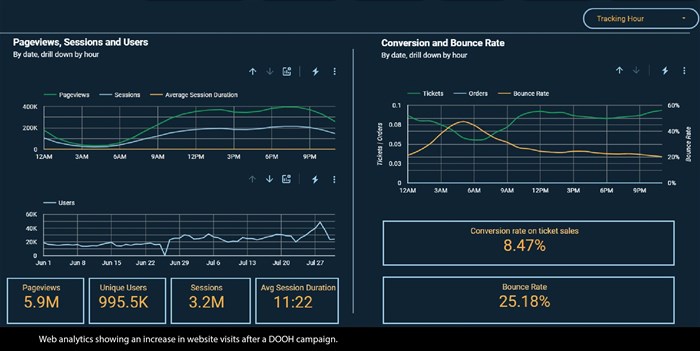

An automotive brand ran a mobile campaign in July. At the end of July we activated the DOOH portion of the campaign. This is where things got interesting...
Due to a late start, the campaign had to play catch-up, and for the next few days DOOH impressions were at a high point.
The visit data tells the story of the increased activity with a big lift in store visits being tracked, as can be seen from the graph below.

This wasn't the only area that showed a lift. The client runs our location tag on their website, as can be seen from the below graph there was a powerful lift in web traffic.
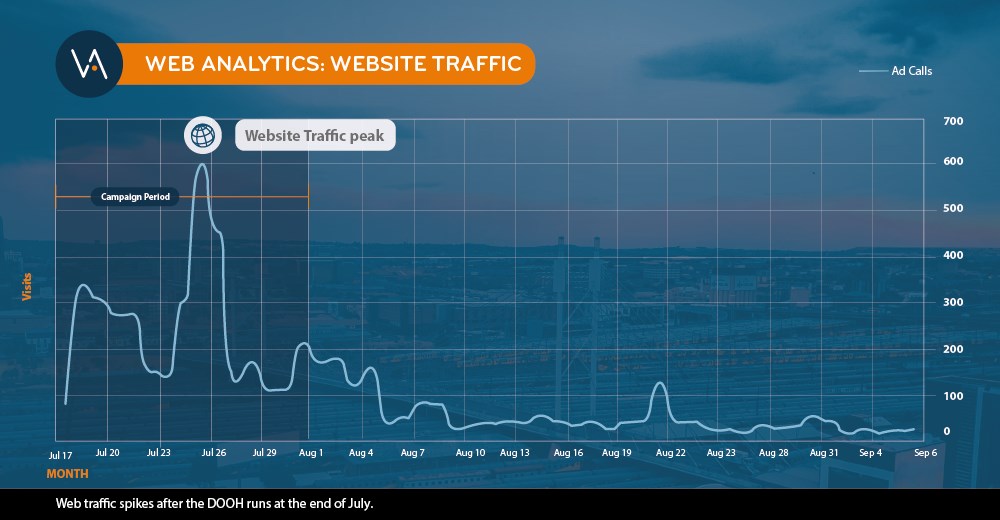
As I mentioned above, we track up to four sources to bring measurement to DOOH, the final area we saw activity was in searches.
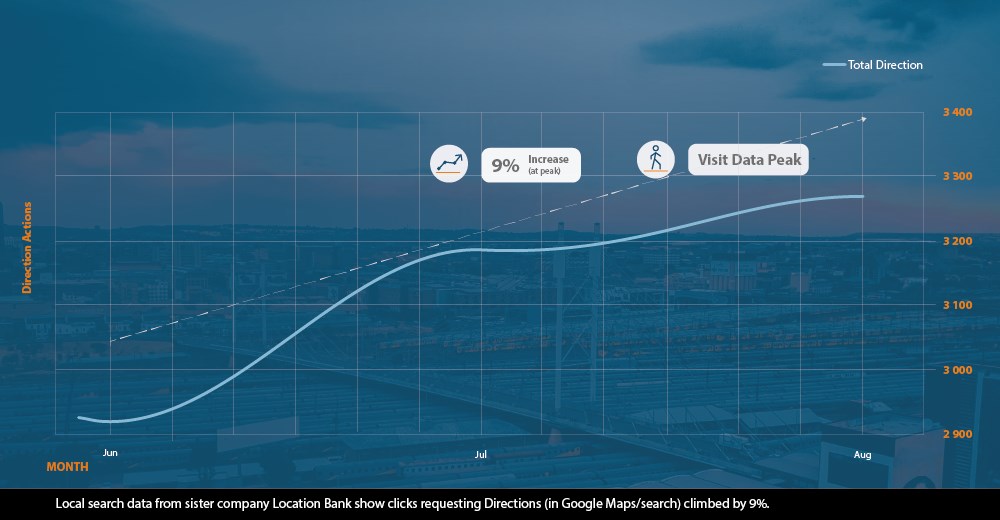
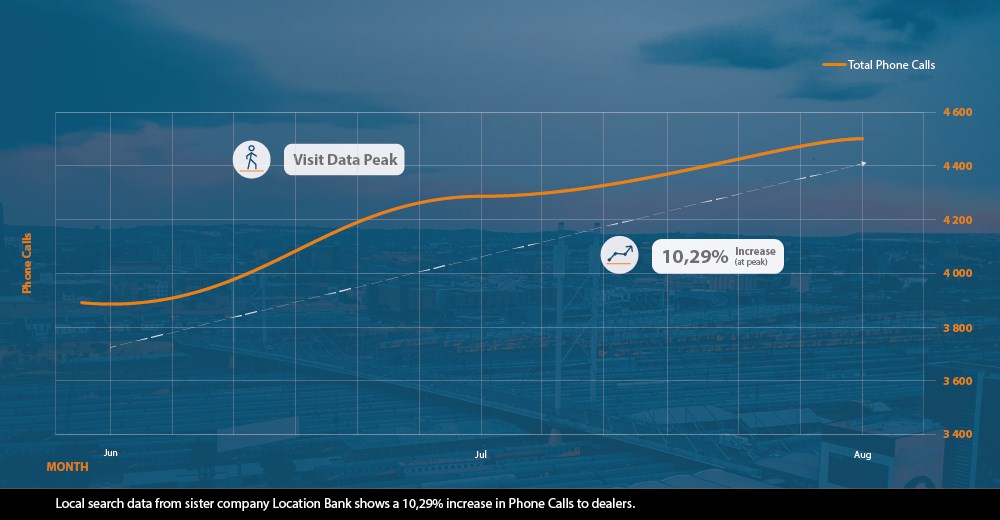
Based on these client wins, what advice would we offer agency partners?
Simple. Not all data is created equal. Verify your data sources where possible and stress test them against your campaign performance. In addition, always ensure they are fit for market and fit for purpose.
Advice for media owners:
Seek to develop inventory that fulfills brands requirements in reaching very specific audiences and that importantly drive performance. With measurement now available in DOOH, certain sites may prove to be less effective than originally suspected whilst others may prove to be more so.
Clutter and over concentration in certain areas could damage performance across the board and devalue some sites if media owners are not cautious with digital roll outs.
For everyone:
Don’t do anything in isolation. Take an omnichannel view and use the best data to plan, execute and measure.
About Sharne Daniels
Sharne Daniels is a DOOH campaign specialist at Vicinity Media.- Vicinity Media disrupts DOOH measurement with industry leading data and analytics27 Feb 12:16
- Serve it up, Cape Town! Is your padel serve as pinpoint accurate as our ad-serving tech?11 Dec 11:53
- 10 years of local excellence: A decade of true location targeting and 1st party data21 Oct 09:48
- Real-time wins: How Vicinity Media's omnichannel solution scored Lay's a 32.4% retail boost28 Aug 12:00
- WeatherTrac unleashed: Data and location precision bring Queen Modjadji’s legendary reign to life23 Aug 10:37
Related
Vicinity Media disrupts DOOH measurement with industry leading data and analytics 27 Feb 2025 10 years of local excellence: A decade of true location targeting and 1st party data 21 Oct 2024 Vicinity Media: How we use DOOH in our retail solution 5 Jul 2024 Location Bank and Vicinity Media have joined forces to improve ‘real world locations’ through their Winter Warmer Drive 4 Jul 2024 Meet the contenders: Introducing the official teams for the Vicinity Media Padel League! 18 Mar 2024 Is your targeting as accurate as ours? Smash the competition in the Vicinity Media Padel League! 19 Feb 2024 The biggest opportunities that mobile data and location technology offer the OOH and digital OOH industry 30 Jun 2023










